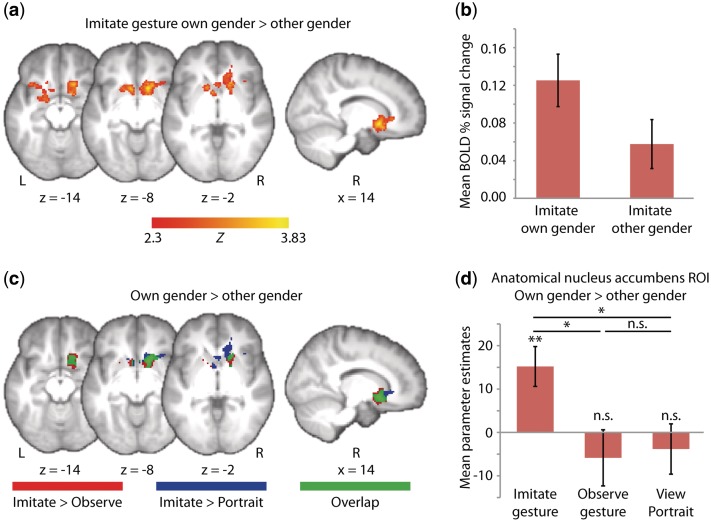Fig. 2.
Results. Functional activity is thresholded at Z > 2.3 with whole-brain correction for multiple comparisons at the cluster level (P < .05), and overlaid on a group average (n = 19) T1-weighted structural scan. (a-b) Whole-brain analysis. (a) During imitation of own gender compared to other gender models, significantly more activity was seen in reward-related neural regions, including the bilateral ventral striatum [MNI coordinates: R (14,14,−8), L (−8, 14, −8)], dorsal striatum and left amygdala. Cluster is 1148 voxels, cluster P = 0.0023, peak Z = 3.83. (b) Percent fMRI signal change from baseline averaged across entire cluster of significant activity shown in (a). Error bars are s.e. (c-d) Gender x condition interaction. (c) Whole-brain interaction effects in regions exhibiting greater activity for own- than other-gender in the imitate gesture condition as compared to the observe gesture condition (red) and the view portrait condition (blue). The overlap between these interaction effects (green) can be interpreted as activity that is unique to imitation. All contrasts are post-threshold masked by significant activity within the (imitate gesture own gender > other gender) contrast; (d) mean differences for (own gender - other gender) parameter estimates averaged across a bilateral nucleus accumbens anatomical ROI. Results displayed are from two gender (own and other) × three condition (imitate gesture, observe gesture and view portrait) repeated measures ANOVA. *P < 0.05, **P < 0.01.

